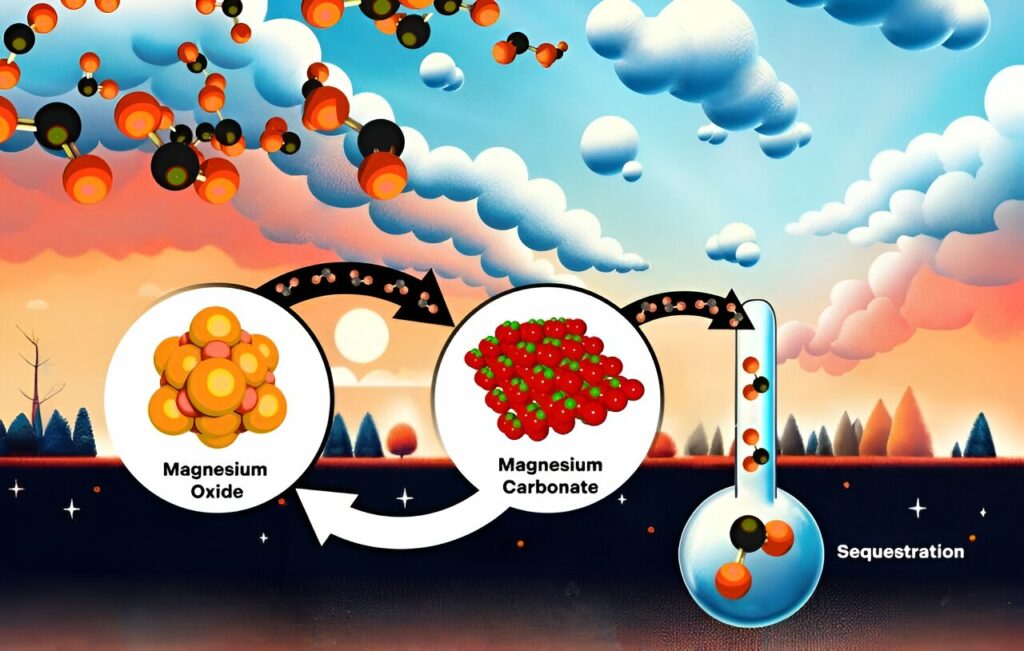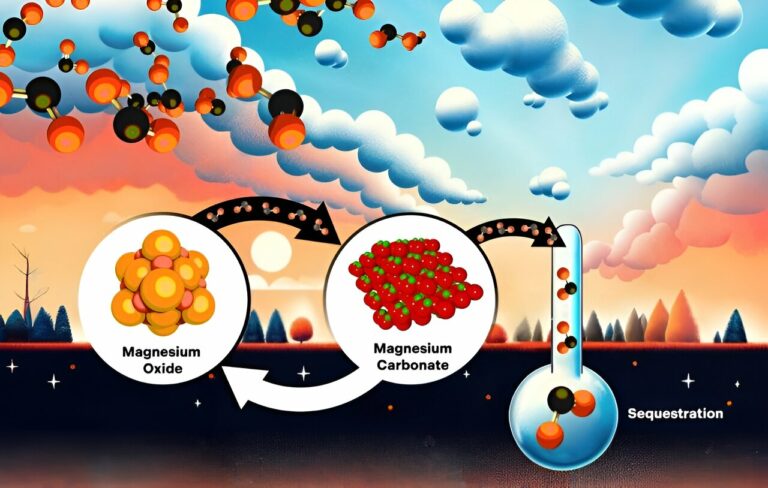Exploring the Dynamics of CO₂ Absorption in Well-Established Magnesium Oxide
Magnesium oxide holds promise as a material for directly capturing carbon dioxide from the atmosphere and sequestering it deep underground to mitigate the impacts of climate change. However, achieving economic feasibility hinges on understanding the rate at which carbon dioxide is absorbed and how environmental conditions influence the underlying chemical reactions.
Researchers at the Department of Energy’s Oak Ridge National Laboratory conducted an analysis on two sets of magnesium oxide crystal samples—one exposed to the atmosphere for decades and another for shorter durations ranging from days to months—to assess reaction rates. Their findings revealed that the absorption of carbon dioxide occurs more gradually over extended periods due to the formation of a reacted layer on the surface of the magnesium oxide crystals.

“The complex mix of various solids in this reacted layer poses a challenge, restricting the accessibility of carbon dioxide molecules to encounter fresh magnesium oxide for reaction. To ensure the economic viability of this technology, we are actively exploring strategies to overcome this armoring effect,” explained Juliane Weber, the principal investigator of the project at ORNL. Andrew Stack, a scientist and project team member at ORNL, expressed optimism, stating, “
If we can successfully address this challenge, this process may have the potential to meet the Carbon Negative Energy Earthshot goal, aiming to capture gigaton levels of carbon dioxide from the air at a cost of less than $100 per metric ton of carbon dioxide.” Previous research on the speed of magnesium oxide and carbon dioxide chemical reactions often relied on approximate calculations rather than precise materials testing. The ORNL study represents a groundbreaking effort, employing a multi-decade test to ascertain reaction rates over extended time scales.
Through transmission electron microscopy at the Center for Nanophase Materials Science (CNMS) at ORNL, the researchers identified the formation of a reacted layer, comprising various intricate crystalline and amorphous hydrated and carbonate phases. Vitaliy Starchenko, a researcher at ORNL, added, “Furthermore, through reactive transport modeling computer simulations, we determined that as the reacted layer accumulates, it becomes increasingly effective at impeding carbon dioxide from reaching fresh magnesium oxide for reaction.
Consequently, our focus moving forward is on devising methods to circumvent this process and facilitate carbon dioxide access to fresh surfaces for reaction.” These computer simulations serve as valuable tools for scientists and engineers, offering insights into the evolution of the reacted layer and its impact on the movement of substances over time. By utilizing computer models, predictions can be made regarding the reactions and material flow in various natural and engineered systems, such as materials sciences and geochemistry.
This article is republished from PhysORG under a Creative Commons license. Read the original article.
Do not forget to share your opinion with us to provide you with the best posts !




0 Comments